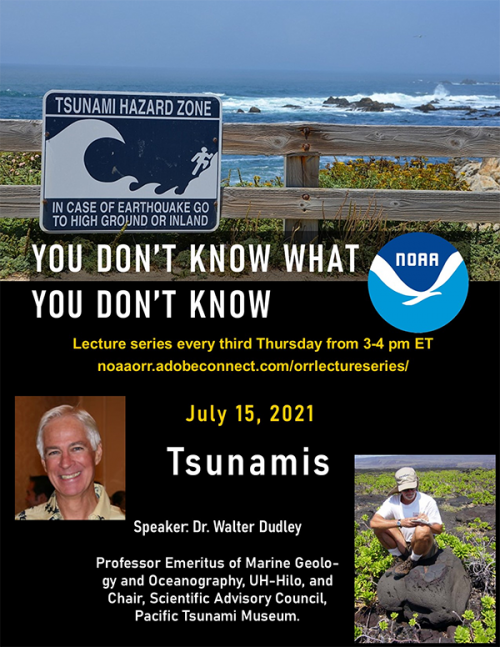You Don't Know What You Don't Know: Tsunami Lecture
JULY 19, 2021 ─ Imagine you are sitting on the beautiful white sand beach in Waikiki on the Island of Oahu. The sun is out, the water is warm, you have a drink in your hand, you see the tide start to move out and swells start to settle, and then…
You hear the alarm, the blaring siren. You think “is that a firetruck?” You look around, see the ice in your drink is starting to melt so you turn your attention back to it and take another long sip. You barely skip a breath thinking about the alarm and then you ignore it. Whatever…
Don't say "whatever!" When you hear a blaring alarm or sirens while on the beach on a beautiful day, think Tsunami! Dr. Walter Dudley explains how Tsunami warning systems have matured through the years as a result of catastrophe. During the latest episode of You Don’t Know What You Don’t Know we learned what can happen when a tsunami strikes, how they happen, and the devastation Tsunami’s can have on a community. We also learned about the best ways to prepare such as not just having an evacuation route, but practicing your route. Also, having warnings alone has been proven to be ineffective! People need training and education to know what the alarm means and how to act. Communities that have a long oral history and practice how to react after an earthquake and when the tsunami alarms ring have had fewer casualties and are safer. When it comes to tsunamis, "It is not if, it is when!"
So next time you head to the coast or the beach, don't just worry about shark attacks or the weather, also be aware of where those Tsunami evacuation signs are, and think about how you could get to high ground if you felt a rumble or heard an alarm.
A recording of the video of this lecture can be requested at youdontknowwhatyoudontknow@noaa.gov.
https://noaaorr.adobeconnect.com/orrlectureseries/
For further information, contact Hayley.Betker@noaa.gov.
 An official website of the United States government.
An official website of the United States government.

